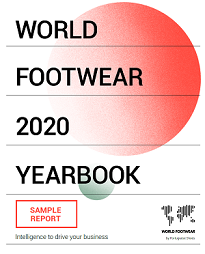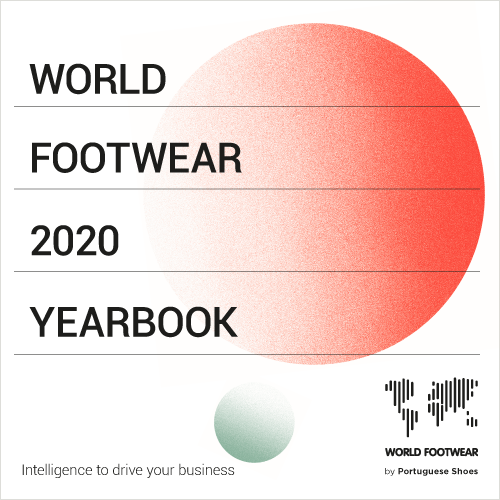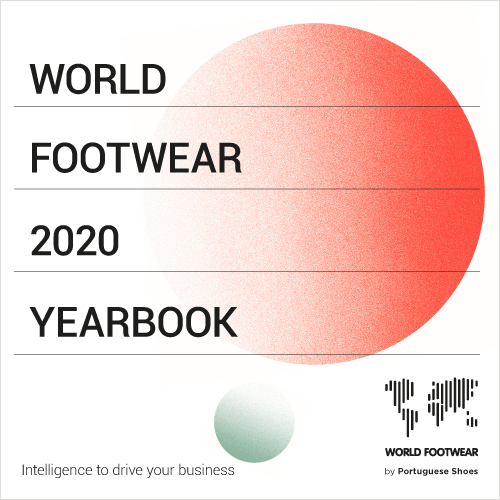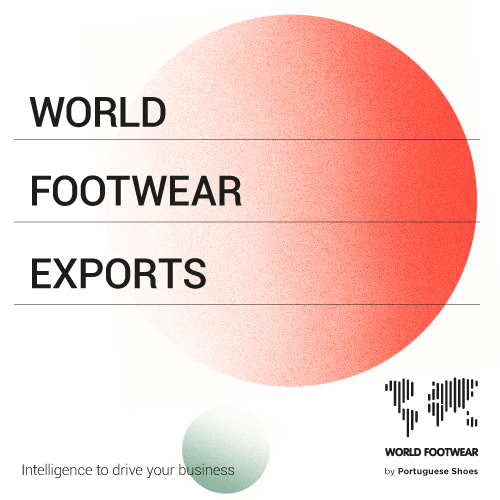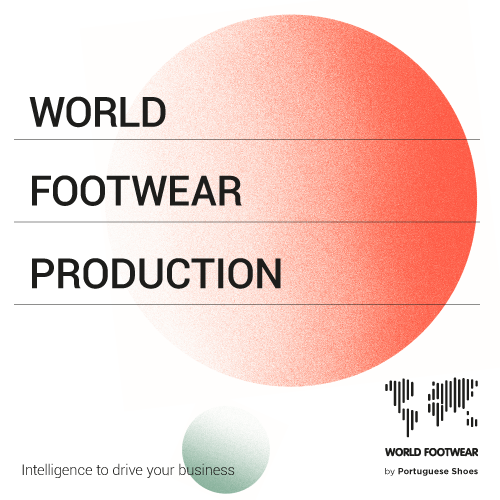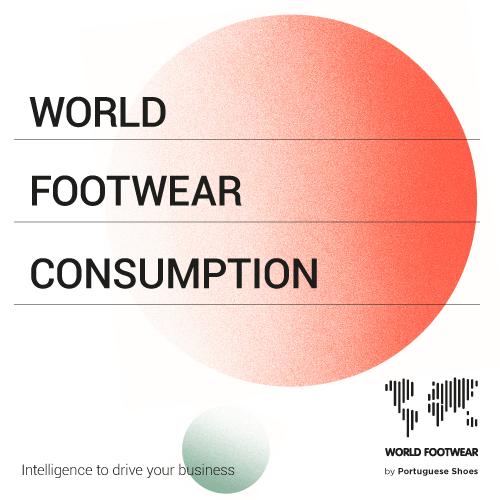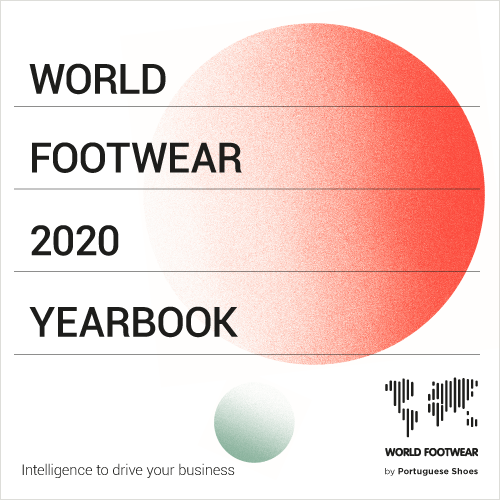Footwear production increased by 21.2% in a decade
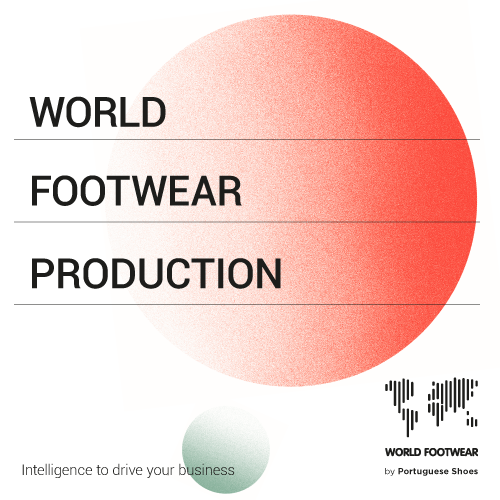
Worldwide footwear production has increased by 21.2% since 2010 at an average yearly growth rate of 2.2%. This is one of the main conclusions of the World Footwear 2020 Yearbook recently launched by APICCAPS
It is the tenth edition of a report that analyses the most important trends within the worldwide footwear industry. Data for 2019, both in quantity and value, is available, making it possible to position the main players with regards to production, consumption, exports and imports. The publication is divided in two parts. A first chapter with a deep analysis of the World Footwear industry in 2019, with special focus on the sector's leading global players, and a second part with a detailed analysis of 84 different markets.
2020 Yearbook Main Conclusions
Footwear production increased by 21.2% over the last decade
Worldwide footwear production has increased by 21.2% since 2010 at an average yearly growth rate of 2.2%. In 2019 the industry slowed down, growing by only 0.6%.
New production record set in 2019
However, this was enough to establish a new production record of 24.3 billion pairs, a record which might hold for a few years yet, given the impact of the COVID-19 pandemic. The footwear industry continues to be strongly concentrated in Asia where almost 9 out of every 10 pairs of shoes are manufactured. Over the last decade, Asia has slightly strengthened its dominance in the international scene, increasing its share of world production by some 2 percentage points.
Asia accounts for more than half of global consumption
Asia’s consumption accounts for more than half of the grand total. Europe and North America each represent 15%. At country level, China, India and the US head up the largest consumer markets. The European Union, if taken as one region, would represent the second largest consumer market for footwear with 2 680 million pairs consumed in 2019. Nonetheless, there are still important geographic differences in consumption patterns. Per capita footwear consumption varies from between 1.6 pairs in Africa to 5.6 pairs in North America.
Asia dominates exports but Europe increased market share over the last decade
15 billion pairs, representing 62% of all footwear produced, where exported in 2019. Unsurprisingly, Asia is the origin of most exports with its world share of 83.9%. Asia’s export share has decreased slightly over the last decade, as is also the case with every continent but Europe. Over the last ten years Europe has increased its share in global exports by 2.6 percentage points.
New record for exports
The value of footwear exports continued to increase in 2019 with a new record of 146 billion dollars, 2% more than in the previous year. This growth was driven mostly by Asian countries which increased their exports by 2.8%. In Europe the growth rate was only 1.2%. In other parts of the world this rate was lower or even negative.
China records declining market share
China was the source of almost 2 out of every 3 pairs of shoes exported in 2019 but its market share has been steadily declining over the last decade. Since 2010 China has lost 7 percentage points. Moving in the opposite direction, Vietnam has almost doubled its market share over the same period. India and Turkey have also shown remarkable performances throughout the decade.
Textile footwear represents one third of all traded footwear
The steep increase in the importance of textile footwear has been the most remarkable feature of the evolution of international footwear trade over the last decade. Textile footwear now represents roughly one third of all footwear trade, up from 14.6% in 2010 (value). Both rubber & plastic and leather footwear lost share to textile. Nonetheless, rubber & plastic footwear still represents almost half (47.5%) of the volume of all footwear exported worldwide and leather footwear represents 38.8% of its value.
Worldwide footwear production has increased by 21.2% since 2010 at an average yearly growth rate of 2.2%. In 2019 the industry slowed down, growing by only 0.6%.
New production record set in 2019
However, this was enough to establish a new production record of 24.3 billion pairs, a record which might hold for a few years yet, given the impact of the COVID-19 pandemic. The footwear industry continues to be strongly concentrated in Asia where almost 9 out of every 10 pairs of shoes are manufactured. Over the last decade, Asia has slightly strengthened its dominance in the international scene, increasing its share of world production by some 2 percentage points.
Asia accounts for more than half of global consumption
Asia’s consumption accounts for more than half of the grand total. Europe and North America each represent 15%. At country level, China, India and the US head up the largest consumer markets. The European Union, if taken as one region, would represent the second largest consumer market for footwear with 2 680 million pairs consumed in 2019. Nonetheless, there are still important geographic differences in consumption patterns. Per capita footwear consumption varies from between 1.6 pairs in Africa to 5.6 pairs in North America.
Asia dominates exports but Europe increased market share over the last decade
15 billion pairs, representing 62% of all footwear produced, where exported in 2019. Unsurprisingly, Asia is the origin of most exports with its world share of 83.9%. Asia’s export share has decreased slightly over the last decade, as is also the case with every continent but Europe. Over the last ten years Europe has increased its share in global exports by 2.6 percentage points.
New record for exports
The value of footwear exports continued to increase in 2019 with a new record of 146 billion dollars, 2% more than in the previous year. This growth was driven mostly by Asian countries which increased their exports by 2.8%. In Europe the growth rate was only 1.2%. In other parts of the world this rate was lower or even negative.
China records declining market share
China was the source of almost 2 out of every 3 pairs of shoes exported in 2019 but its market share has been steadily declining over the last decade. Since 2010 China has lost 7 percentage points. Moving in the opposite direction, Vietnam has almost doubled its market share over the same period. India and Turkey have also shown remarkable performances throughout the decade.
Textile footwear represents one third of all traded footwear
The steep increase in the importance of textile footwear has been the most remarkable feature of the evolution of international footwear trade over the last decade. Textile footwear now represents roughly one third of all footwear trade, up from 14.6% in 2010 (value). Both rubber & plastic and leather footwear lost share to textile. Nonetheless, rubber & plastic footwear still represents almost half (47.5%) of the volume of all footwear exported worldwide and leather footwear represents 38.8% of its value.


